I had an appointment in the afternoon on Friday so I took the morning off of work as well and zoomed around the garden. I got some edging finished, spread some more compost, did some more weeding, planted a few containers at the family cottage and generally just enjoyed a great morning in the garden. I wish I could have more of those. Coffee while gardening is almost as good as beer while gardening.
I had a few other things to attend to Saturday and it was raining anyway, so I didn’t get in the garden until about 4 p.m. Fortunately Mr. Much More Patient begrudgingly helped move compost so with him hauling and me spreading, it took only about 45 minutes to do what would have taken me two hours alone. There are only about two more wheelbarrows full left from the pile of six yards of compost I had delivered more than a month ago. It was a ton of work to move all that, but I think the occasional topdressing of the beds in compost does so much good.
Sunday I volunteered at a garden tour at a private garden on a 120-acre property as a “plant expert”(please note the use of the quotation marks; it was not a label I would have given myself). It was an absolutely beautiful day with a nice breeze and 75- to 80-degree temperatures. There were so many nice people (and a few not-so-nice) people who came to tour the garden. I found it so interesting to have the complete plant list for the gardens, which must have well over 500 different plants on it.
The head gardener for the property was on hand to answer questions and I think he was cringing a little bit to see so many people in the garden, but he had to have been happy with the lovely comments people offered. I can’t even imagine how many hours the staff must have put in preparing for this event. I know I would be absolutely frantic if any group toured my garden, much less more than 1,000 people. This garden was open to the public just one other time two years ago, during the Garden Conservancy Tour, and I toured it then. That time the tour was in August, so it was so interesting to see how different the garden looked at a different time of year.
Since it was a private residence, they requested that people not take photos. The photos you see here are courtesy of the garden caretakers via the event website and Facebook page.
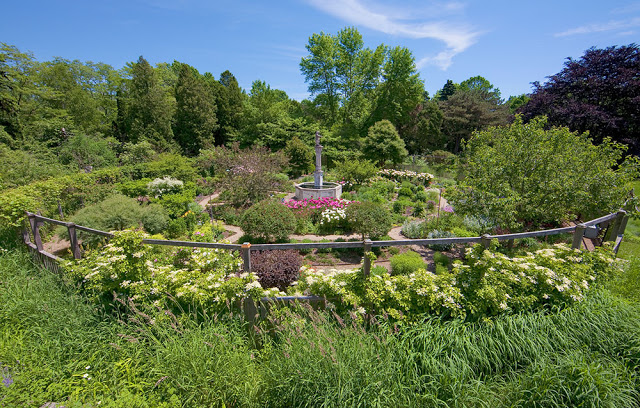 |
| The circle garden as seen from above. |
The more manicured garden areas surround the main house and the stunning circle garden (an old horse corral) is set up in an almost labyrinth-type pattern, with pea gravel paths and a fish pool in the middle. The plant list for the circle garden was six pages in about 9-point type. Other than a few very unusual plants, nothing is marked with a tag. Remember, this is personal garden, not a botanical or public garden, so if they owners and gardeners don’t want plant tags cluttering up the garden, that’s their call.
But here’s the interesting thing. The gardeners can’t necessarily tell you off the top of their heads what a plant is either. They know their behavior but without looking at the plant list they might not be able to tell you what it is and they quite likely may not be able to tell you the cultivar. I find this refreshing, to be honest. It’s sort of seat-of-your pants gardening. I like that. Plus it would be next to impossible for anyone to know all of those plants off the top of their head.
These are the lessons this garden offers:
1. Plant in masses. Under one small standardized hydrangea they had planted large clumps of ‘Caesar’s Brother’ Siberian iris. There were probably 15 clumps at least and almost everyone remarked at how beautiful they were. I don’t think the effect would have been nearly as dramatic if there had only been five clumps.
2. Groundcovers can be beautiful all on their own. In the aptly named rock garden ground-hugging groundcovers (blue star creeper, creeping thyme, Cerastium tormentosum (Snow in Summer), many kinds of sedum, among others) were planted in puddles. There was no star, just a patchwork quilt of groundcovers. The effect was serene and interesting.
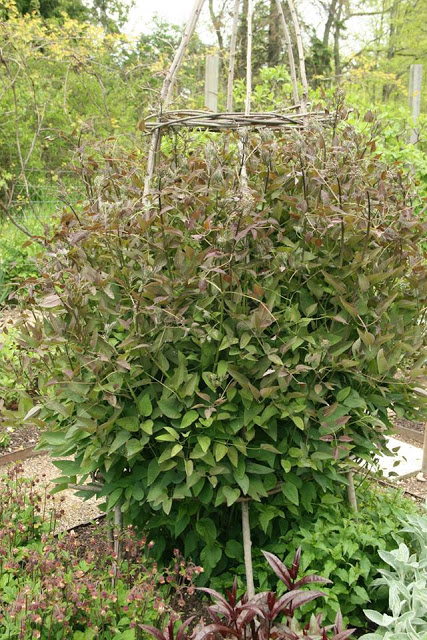 |
| The willow supports on this recta purpurea clematis are made from cuttings on the properties by the gardeners. I think it’s a really interesting way to grow a clematis. |

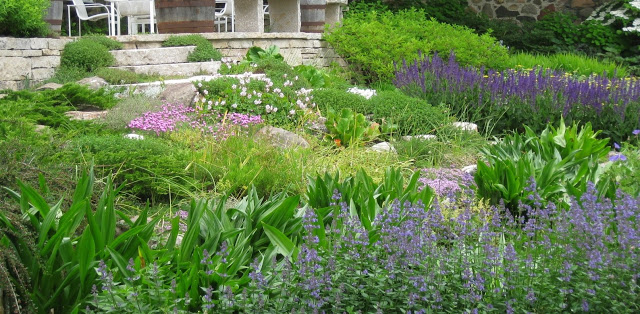
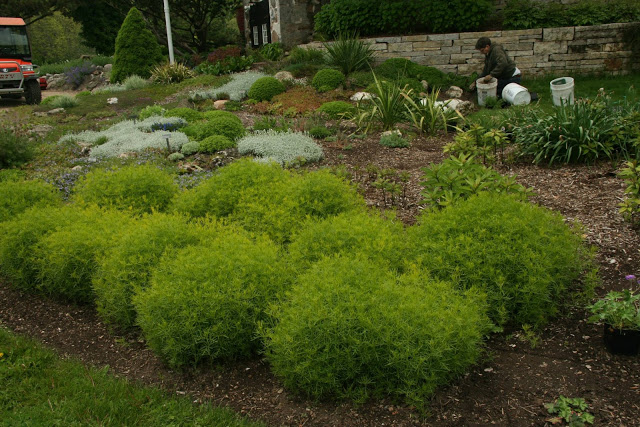
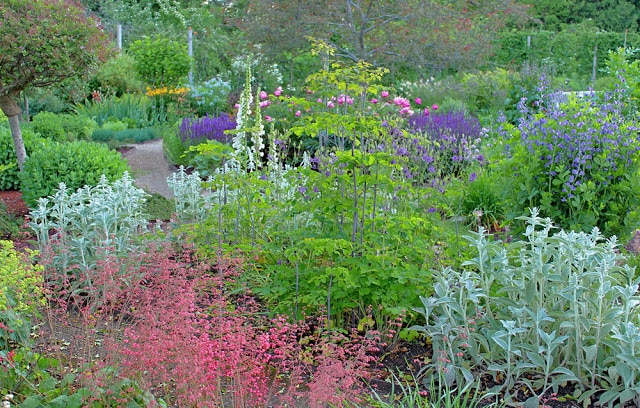
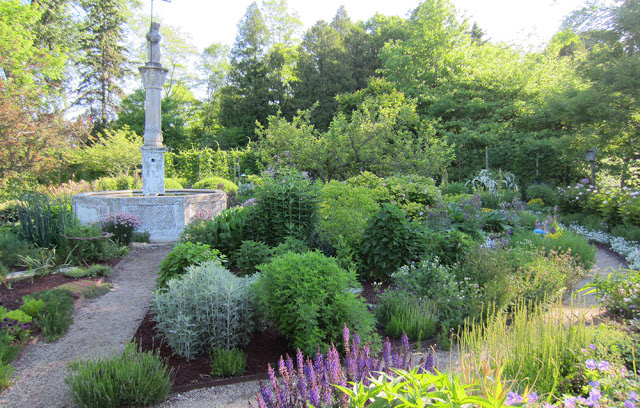

6 Responses
Great lessons, Erin. And I'm so glad that your weather has finally turned and you can enjoy the gardens. I ventured out yesterday for the first time, plastic wrapping my cast so that it wouldn't get dirty, and weeded my vegetable patch, staked the tomatoes and planted some more beet seeds (for later harvesting). It sure felt good, although I paid for it later with a very sore ankle. Oh well.
As for the autumn crocus – I've had them in the past and love the surprise of a "spring bulb" showing off in the autumn. Kylee (above) is right – the blooms are enormous!
Good for you for getting out there! I bet it was fabulous even it if did hurt a bit later.
I'm not sure how I've missed the boat on Colchicum all these years.
Great observations, Erin. Love that circle garden! And yes, I grow autumn crocus, if by that, you mean Colchicum. I've got other more traditional crocus that blooms in autumn too, such as saffron crocus, from which the spice saffron comes. The Colchicum blooms are ginormous and really unusual at that time of year.
I do indeed mean Colchicum (but I had to look it up to make sure that's what I meant :)). How have I not known about these before?
I'm a little concerned because I read that colchicum is toxic and I always worry about the dogs, but animals generally know what is OK to eat and what isn't and it's not like my dogs often go in the garden to snack, but I do watch out for that.
What a cool place & a great post! Thanks for sharing!
Great post, I loved the pictures! I keep looking at the autumn crocus's and thinking about ordering them… especially the saffron ones. Just haven't gotten around to it yet.